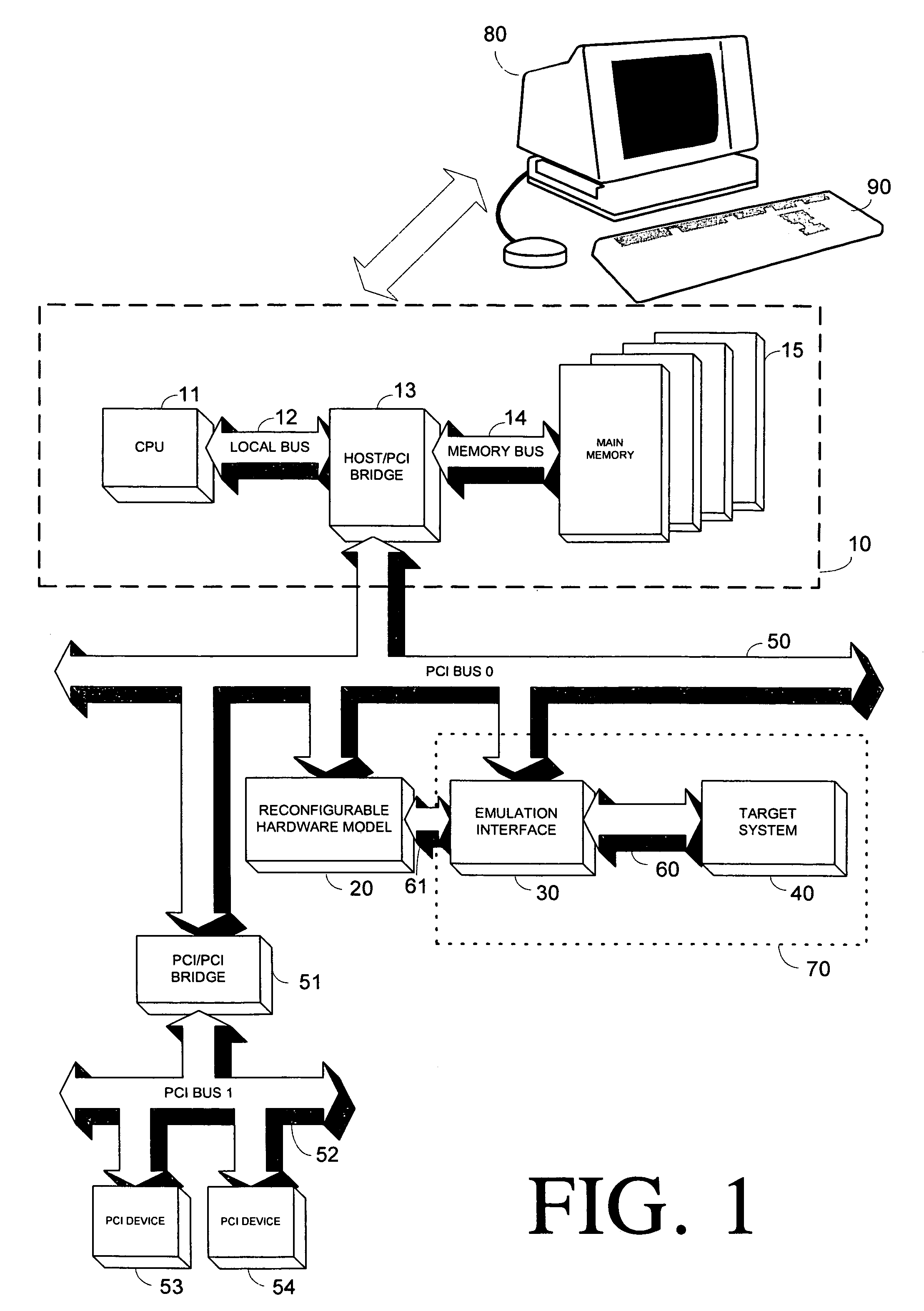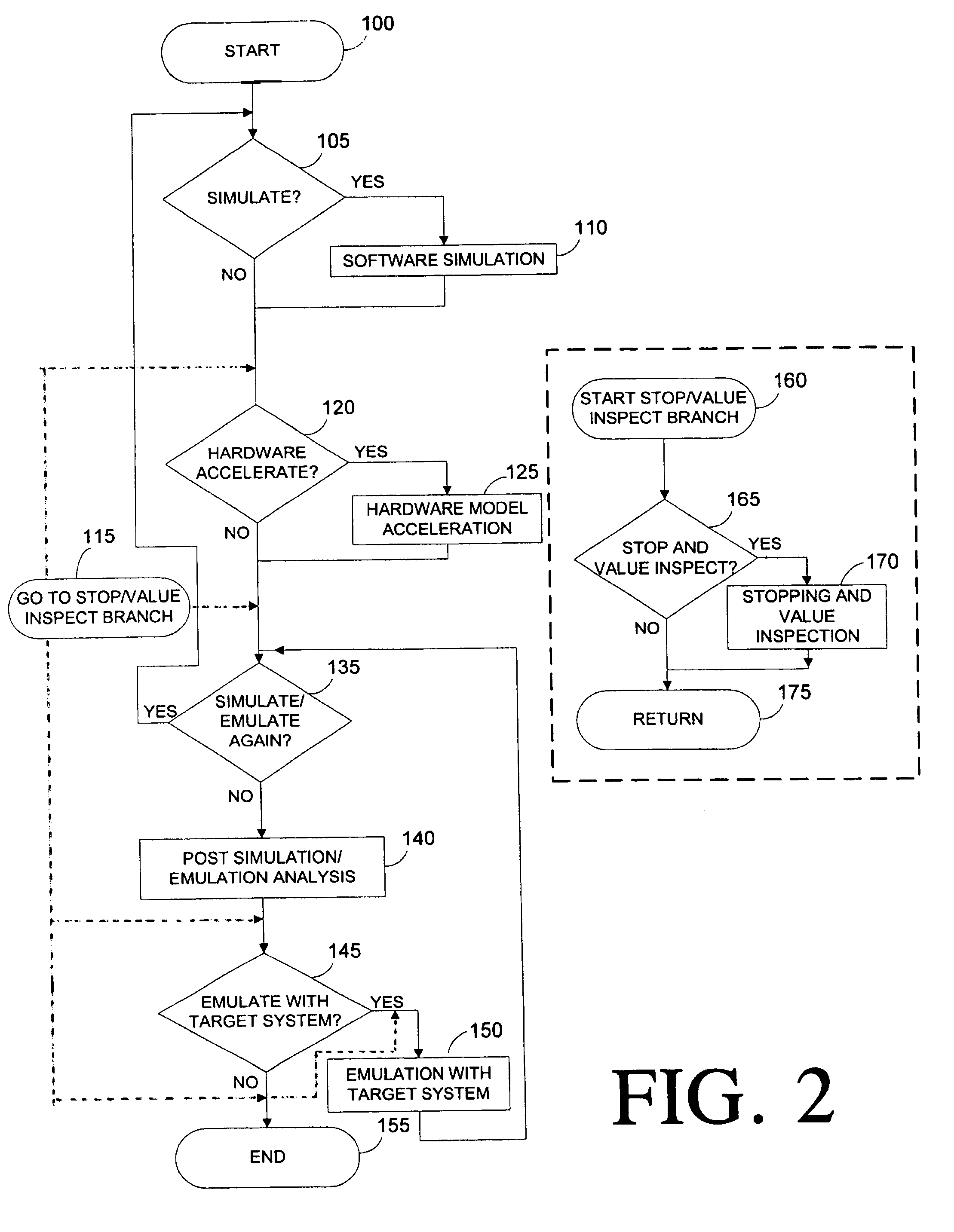VCD-on-demand system and method
a technology of vcd and demand, applied in the field of eda, can solve the problems of burdening users, requiring some degree of user sophistication, and cumbersome current software simulation and hardware emulation/acceleration, and achieve the effect of accelerating the debugging process
- Summary
- Abstract
- Description
- Claims
- Application Information
AI Technical Summary
Benefits of technology
Problems solved by technology
Method used
Image
Examples
Embodiment Construction
[0119]This specification will describe the various embodiments of the present invention through and within the context of a system called “SEmulator” or “SEmulation” system. Throughout the specification, the terms “SEmulation system,”“SEmulator system,”“SEmulator,” or simply “system” may be used. These terms refer to various apparatus and method embodiments in accordance with the present invention for any combination of four operating modes: (1) software simulation, (2) simulation through hardware acceleration, (3) in-circuit emulation (ICE), and (4) post-simulation analysis, including their respective set-up or pre-processing stages. At other times, the term “SEmulation” may be used. This term refers to the novel processes described herein.
[0120]Similarly, terms such as “Reconfigurable Computing (RCC) Array System” or “RCC computing system” refers to that portion of the simulation / coverification system that contains the main processor, software kernel and the software model of the ...
PUM
 Login to View More
Login to View More Abstract
Description
Claims
Application Information
 Login to View More
Login to View More - R&D
- Intellectual Property
- Life Sciences
- Materials
- Tech Scout
- Unparalleled Data Quality
- Higher Quality Content
- 60% Fewer Hallucinations
Browse by: Latest US Patents, China's latest patents, Technical Efficacy Thesaurus, Application Domain, Technology Topic, Popular Technical Reports.
© 2025 PatSnap. All rights reserved.Legal|Privacy policy|Modern Slavery Act Transparency Statement|Sitemap|About US| Contact US: help@patsnap.com



